File under “two birds, one stone”: Recycle old, outdated or damaged books and develop your drawing skills by creating fresh new book page art.
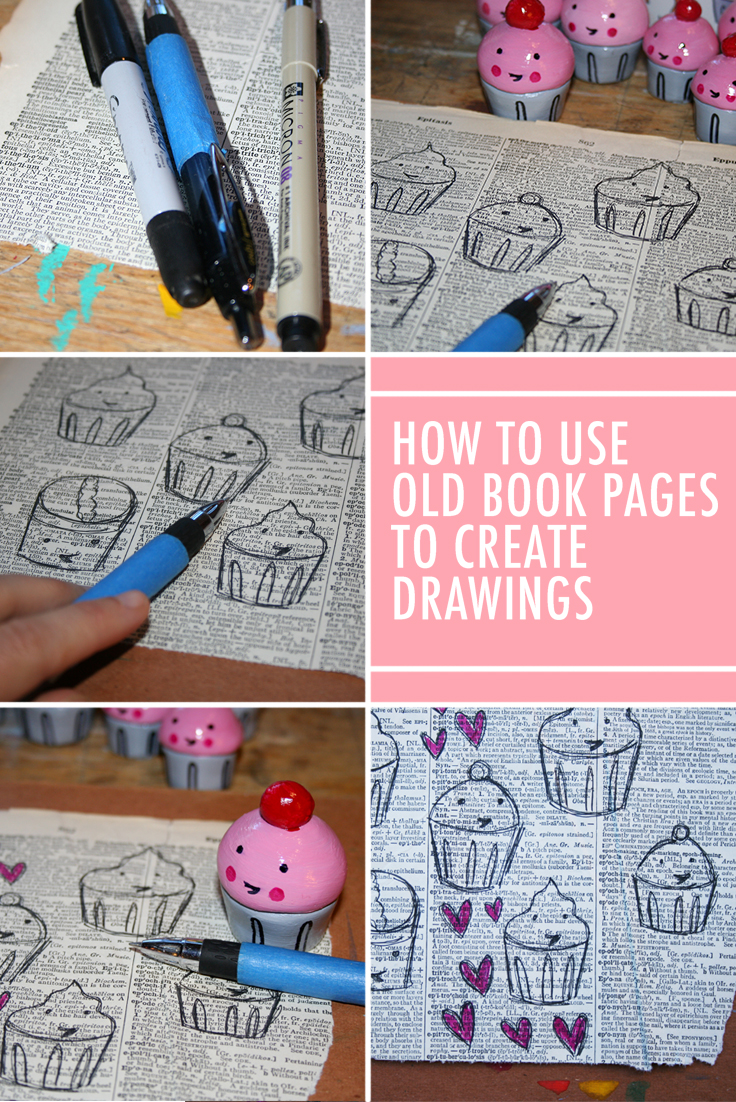
Photos and art via CakeSpy unless otherwise noted
So-called “upcycled” art makes new and creative use of old materials that might otherwise be thrown away. The pages from old, outdated or falling-apart books can be a fantastic surface for creating artwork, allowing you not only to salvage the pages but to create something beautiful.

Illustration via Leia Hays
Why use book pages to make art?
We’re not advocating ruining books in the name of art, but everyone has an outdated or damaged book around that isn’t doing much more than taking up space. Perhaps it’s an old dictionary with water damage. Or maybe it’s a years-old, outdated travel guide. Creating drawings on the pages from these books is a great way to make use of these otherwise not-so-useful volumes.
In addition to a creative uses for old books, your drawings against text can create a powerful, compelling visual. This means that not only have you successfully “upcycled,” but you’ve practiced your drawing skills in the process.
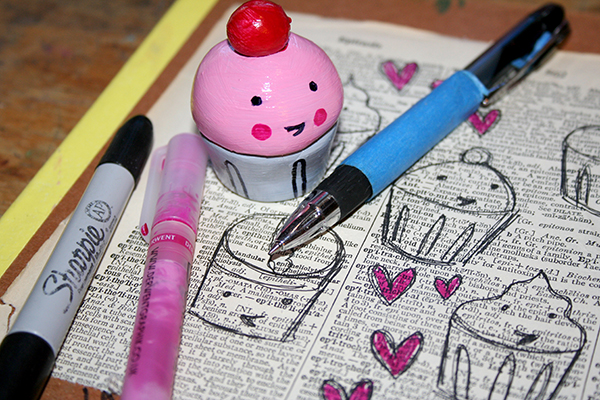
Book page illustrations: the basics
The process of making these pages is actually quite easy.
Supplies:
- Old book pages
- A pencil, pen or your preferred drawing media
Step 1:
Choose the book pages on which you’d like to draw. Choose pages that have an amount of text that you think will work as a good backdrop for your imagery. Carefully cut or rip out the pages. Ripping can sometimes give you an interesting, uneven edge on your pages, but cutting will give you a cleaner edge.
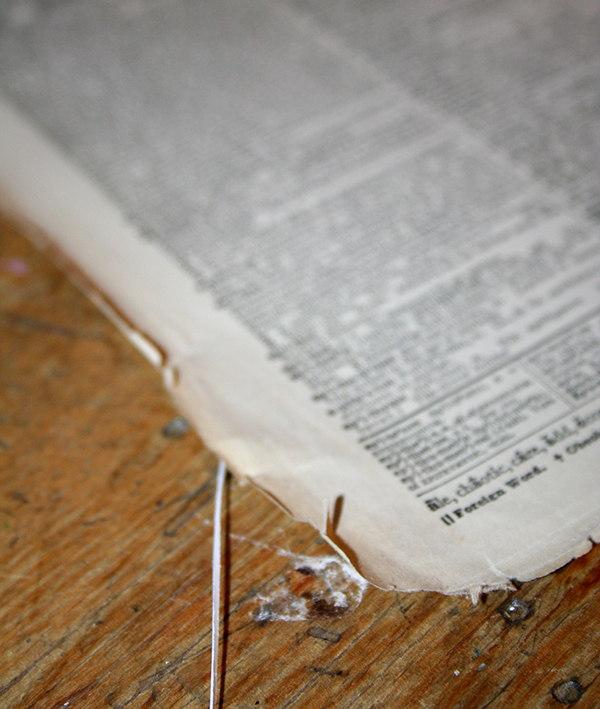
Step 2:
Choose your medium. Many times, the page will call out for a specific medium. Sometimes, it’s a good idea to let the page surface dictate what medium you choose.
For instance, you may love working with a nib pen, but depending on the type of page you’re using, it may be prone to snag. Or perhaps you love markers or fine point felt tips, but they can be prone to bleed when used on book pages. Whatever medium you decide on, test it on the corner of the page or on another page from the same volume that you can use as scrap paper.

Step 3:
Now for the fun part: Start drawing! Evaluate the image a few minutes in; step back and take a look at your piece. You might find that the line quality needs to be a little thicker so that it can be noticed above the background text or imagery.
For instance, in the below image, a simple line drawing was too hard to see. When the lines were thickened a bit and drawn in a more sketchy way, they are far more recognizable and striking.

Step 4:
Make any further additions or adjustments. Employ other media, add color or just keep on drawing with your chosen medium. Feel free to experiment and see what works for you.
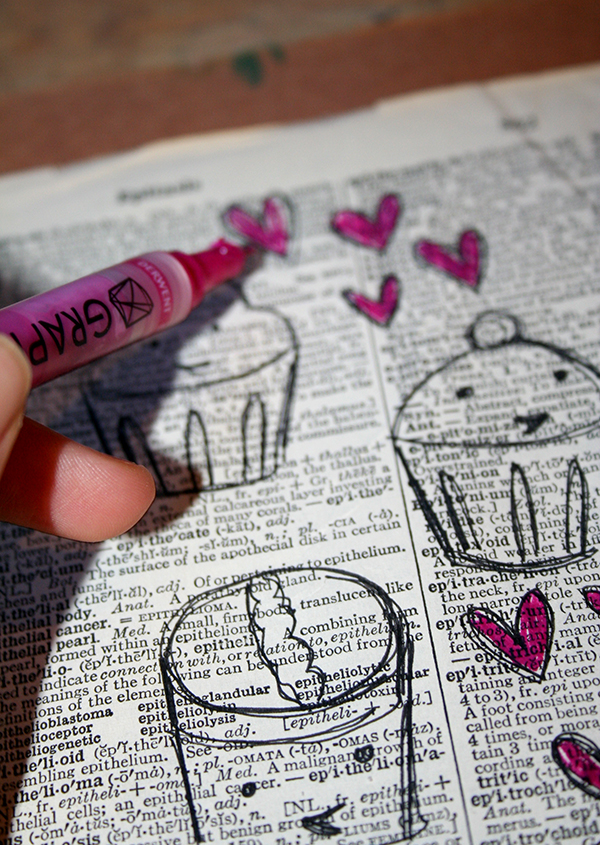
Step 5:
Finish it up. Old book pages are often fragile, so you might want to consider mounting the page on a sturdier backing paper. This may not be necessary, but it’s something to consider for older or more delicate book pages.
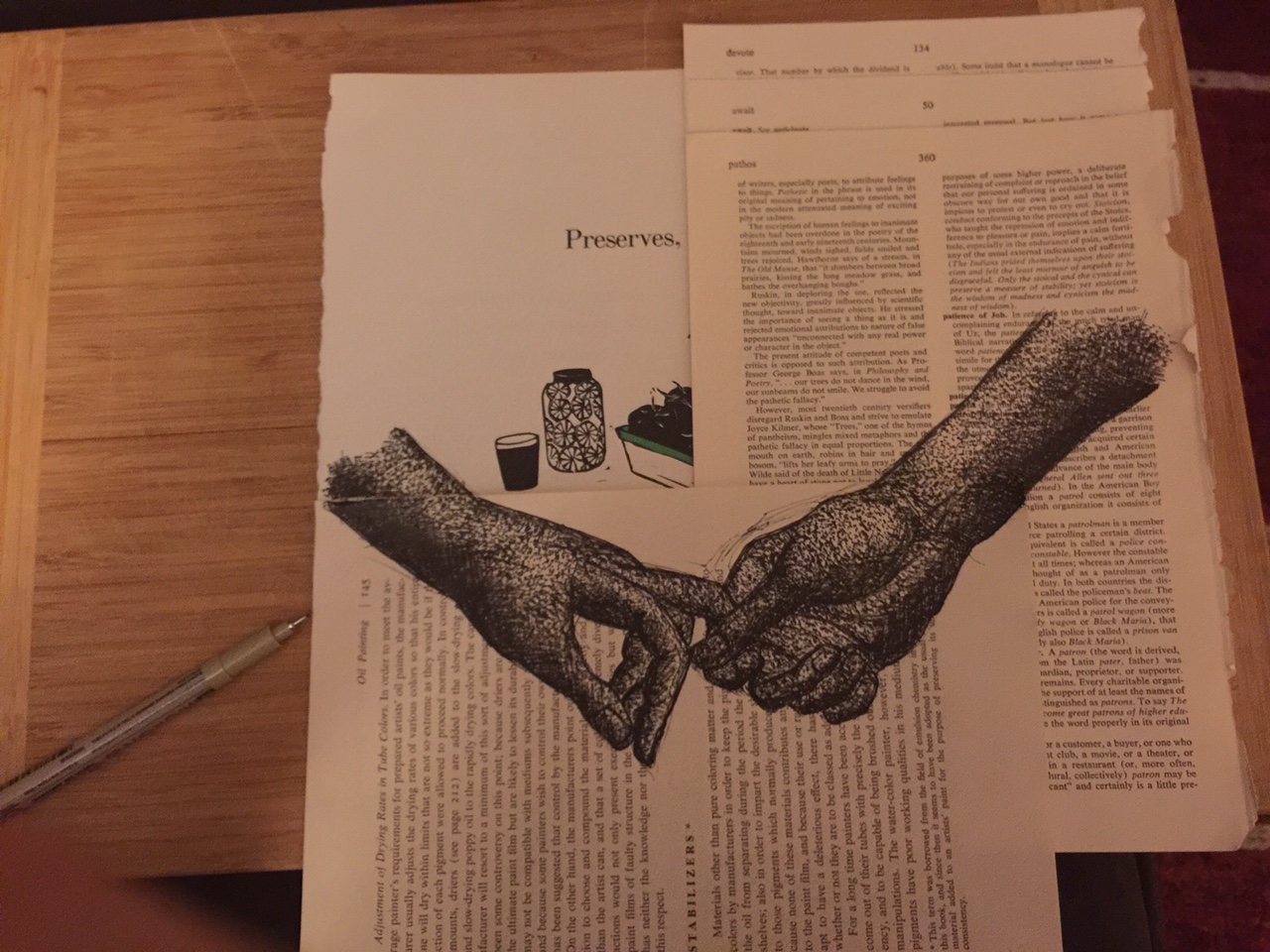
Illustration via Leia Hays
Creative variations
- Use multiple pages to create a fascinating collage-like composition.
- Use pens such as Graphik line painters to add colorful elements to your drawing.
- Add a splash of gouache or acrylic paint to make a mixed media piece.
- Try to find pages from your text that are relevant to the drawing for an added element of cleverness.

Share tips, start a discussion or ask one of our experts or other students a question.
No Responses to “Mixed Media Inspiration: Repurpose Old Books to Create Book Page Art”